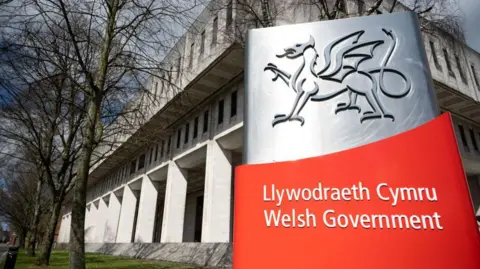The call to sell the Welsh government’s headquarters in Cardiff has been raised by Des Clifford, a former high-ranking official who once led the office of the first minister in Cathays Park. Clifford advocates for the establishment of a smaller office located in Cardiff Bay, in proximity to the Senedd—the home of Welsh parliament. This proposal has emerged amid revelations that an alarmingly low 19% of employees based in the Cathays Park office physically attended work during March, highlighting a drastic shift in workplace culture following the COVID-19 pandemic.
As remote work becomes more commonplace, First Minister Eluned Morgan has acknowledged the challenge of sustaining the current office space if attendance continues to dwindle. Before the pandemic, around 2,500 individuals reported to the Cathays Park office daily. However, the most recent attendance statistics indicate that only an average of 576 employees (or 19% of total capacity) were present each day, with the highest count recorded at 799, equating to merely 26%.
Clifford’s remarks have stirred discussion on the practicality of maintaining a large space that is largely underused. During a recent interview with BBC’s Newyddion S4C, he criticized the architectural appeal of the Cathays Park office, labeling it as “ugly and unfriendly.” He suggested that selling the building to a local institution, such as a university, could be beneficial. Establishing a new office adjacent to the Senedd, according to Clifford, could foster better collaboration between civil servants and legislators, enhancing governmental coherence.
The Cathays Park complex, which is historically significant, consists of two interlinked buildings. The older edifice, which dates back to the 1930s and is listed as Grade II, originally accommodated the UK government’s Welsh Board of Health. Subsequently, it transitioned to the home of the Welsh Office when the post of secretary of state for Wales was instated in the 1960s. The newer section, added in 1979, was built to house the expanding responsibilities of the Welsh Office. Collectively, these buildings have served as the operational center for Wales’s devolved government since the establishment of devolution in 1999.
In addition to questioning the necessity of large offices, Clifford brought attention to the operational costs associated with maintaining multiple governance sites across Wales. In its current fiscal year, the government is expending £24.5 million on office operations, yet the average daily attendance across all sites is reported at merely 16%. Questions regarding the viability of maintaining offices that are distanced from each other—such as those in Llandudno Junction and Caernarfon—are growing. The Welsh government is now faced with “awkward questions” concerning the justification of these spaces, particularly as demands for remote work rise.
Eluned Morgan has recently articulated that the Welsh government expects its staff to spend around 40% of their work week within the office—approximately two days out of a typical five-day workweek. However, she has also emphasized the unsustainability of operating offices where attendance is insufficient. A review of the Powys offices in Llandrindod Wells and Newtown is already in progress to evaluate their necessity.
The ongoing dialogue about the future of Cathays Park and other governmental offices reflects broader debates about workplace norms, particularly in the wake of the pandemic. As organizations increasingly adopt flexible work models, the significance of location, office space, and in-person collaboration must be reassessed within the context of modern governance. This reassessment may ultimately result in an altered structure for the Welsh government that embraces both efficiency and accessibility, catering to the needs of both civil servants and the communities they serve.











